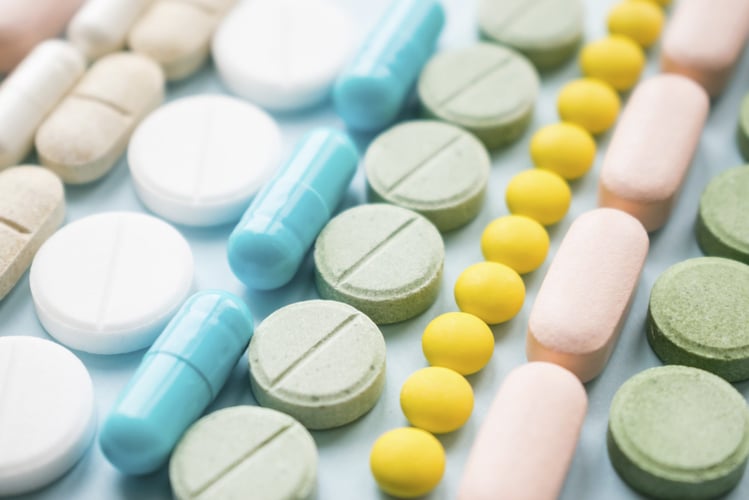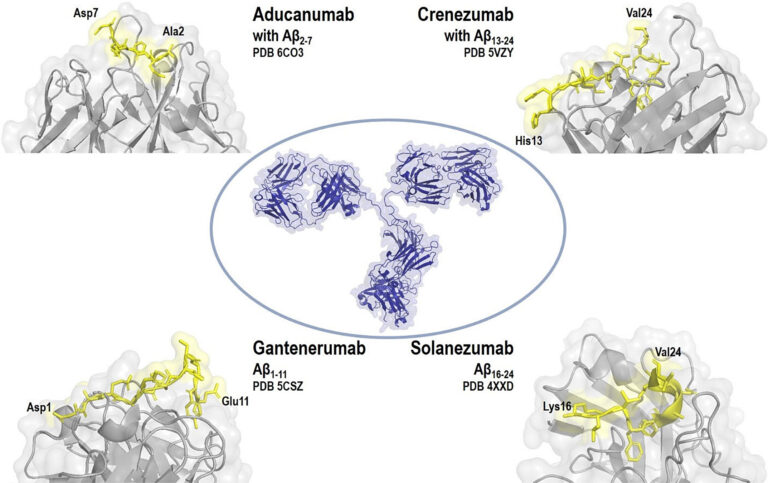Use of Titanium Dioxide in the EU Food Market
In 2021, the European Food Safety Authority (EFSA) investigated the safety of the white coloring agent titanium dioxide (TiO2) and concluded that the substance should not be considered safe as a food additive due to uncertainties around possible inflammation and neurotoxicity. On the basis of new data and strengthened methods EFSA scientists could not rule out a concern for genotoxicity and consequently they could not establish a safe level for daily intake of TiO2 as a food additive.
The US FDA reviewed the findings of EFSA's 2021 Opinion on TiO2. The FDA notes that EFSA's 2021 Opinion continued to confirm no general and organ toxicity and no effects on reproductive and developmental toxicity. The US FDA has assessed the safety of TiO2 pigment as a color additive in food, drug and cosmetic applications (intended for use around the eye), and as an ingredient in sunscreen products. For use in foods, the FDA categorizes TiO2 as Generally Recognized as Safe (GRAS) at a maximum 1 percent by weight. For drugs, the color additive TiO2 may be used for coloring ingested and externally applied drugs generally, in amounts consistent with good manufacturing practice.
In the EU, the phasing out period for TiO2 came to a halt on August 7, 2022. Manufacturers will no longer be allowed to place food containing TiO2 (such as chewing gum, and white decoration on cakes and pastries) on the market. After that date, it can still be in the store until the shelf life has expired. So, the food industry needs to change their product formulations and find good alternatives for TiO2 (E171).
Titanium dioxide is also used as an excipient in medicinal products, e.g., film-coated tablets, pellets and capsule shells.
Pure TiO2 has at least two key functions in medicinal products:
- Coloring agent – It has a high refractive index which means it has the ability to scatter light. This gives it an ultra-white appearance. It is often said that TiO2 is the only real brightener and the only substance that has the property of making products white.
- Opacifying agent – It has a unique combination of properties, for example, it also protects the active ingredients against UV/light and heat degradation. It is an essential component of the protective layer which aids in preserving the safety, efficacy, and quality of the product over its' shelf life by supporting the physical integrity of the product or is a stabilizer for photosensitive formulations by protecting other UV sensitive ingredients from degradation on exposure to visible light.
Compared to other excipients, TiO2 allows for a thinner, less fragile outer layer of the tablet. This ensures that the active substance of the drug becomes available quickly after oral administration. TiO2 thus aids in preserving the safety, efficacy and quality of the product over its' shelf life by supporting the physical integrity of the product and/or is a stabilizer for photosensitive formulations by protecting other UV sensitive ingredients from degradation when exposed to visible light.
The approval of coloring agents/dyes in medicines is currently linked to the approval as a food additive. It is unclear whether it is feasible to replace TiO2 in medicines. There are not immediately good alternatives available with the same, unique combination of properties. Particular concerns have been raised about the impact on appearance (loss of opacity and strength), light resistance and/or the need for increased film coating quantities. Possible alternatives identified so far are:
- Carbonates
- Phosphates
- Starches
- Talc
- Concepts (mixes of alternative excipients) applied in food industry
- Removal of TiO2 from the composition with no replacement
These possible alternatives should be re-examined for their impact on the quality, safety and efficacy of the newly formulated medicines.
Communication within the EU
- In June 2021, EMA QWP experts distributed a list of questions with a deadline of 30 June 2021.
- In July 2021, three European associations representing the human medicines manufacturers (AESGP, EFPIA, Medicines for Europe) provided feedback to the QWP experts/EMA in relation to the opinion of European Food Safety Agency (EFSA) on titanium dioxide as food additive (E171) and its impact on human and veterinary medicinal products.
- Based upon the EU association's written answers, European Medicines Agency (EMA) issued the "Final feedback from European Medicine Agency (EMA) to the EU Commission request to evaluate the impact of the removal of TiO2 from the list of authorized food additives on medicinal products EMA/504010/2021" and Annexes I and II (in October 2021) in which the following conclusion is drawn: "Given the large number of products impacted, it will not be possible to carry out the work for all products simultaneously and prioritization of product reformulation will be necessary. This will increase the overall time needed for implementation. Prioritization by the Pharmaceutical industry is likely to be focused on high volume products, and not necessarily on products for medical need and there is currently no mechanism available to regulators to dictate the priority of products to be reformulated. Industry estimates for reformulation of individual products vary from 3 to 5 years and regulatory estimates to approve individual changes are 3 months to 1 year. Taking these timeframes and the volume of products involved into account, the industry estimates of 7-12 years are not considered unreasonable. QWP conclude that a transition period of 10 years or even longer would be required for the phasing out of TiO2 in medicines." The CMDh discussed a proposal to include reference to Commission Regulation (EU) 2022/63 in the assessment report (AR) of new applications for products that contain the excipients to make the applicants aware of any possible future implications.
- In October 2021, the EU Member States approved the proposal of the European Commission to ban TiO2 in all food products in the European Union (EU) (European Commission's FAQ on TiO2).
- Since July 2022, technical and procedural guidance is provided in the Quality of medicines questions and answers: part 2 on the replacement/removal of titanium dioxide in medicines, explaining the implications of the regulatory amendments passed early this year.
The Q&A explains companies that have filed, or are close to filing, for approval of products that contain titanium dioxide can continue to include the excipient in their formulations. However, EMA wants marketing authorization holders "to make all possible efforts to accelerate the research and development of alternatives and to replace" titanium dioxide in their authorized products.
EMA said, "it is essential that manufacturers collaborate with each other regarding research and development of alternatives" and set out the scientific data requirements for removal and replacement.
The removal or replacement of TiO2 may go beyond a simple change and constitute a product/ process re-development to a greater or lesser extent.
It can be envisaged that variations may need to be submitted for currently registered film-coated tablets, pellets, and capsule shells in the EU as a direct consequence of implementing the excipient change. EMA has therefore provided potential regulatory pathways to support the removal/ replacement of TiO2 in medicinal products. Changes anticipated are for example:
- changes in the shape or dimensions of the pharmaceutical form (B.II.a.2),
- changes in analytical methods for the finished product (B.II.d.2),
- changes in the finished product specification (B.II.d.1),
- changes to processes (B.II.b.3) and in-process controls (B.II.b.5),
- changes in the packaging of the finished product (B.II.e.1),
- changes in product shelf life and storage conditions (B.II.f.1).
It is recommended that all variations that are a consequence of the removal or replacement of TiO2 are submitted together as a grouped variations in the EU. The assessment by Health Agencies could take an estimated 7 to 12 years for the sheer number of drugs.
Additional Information:
- May 2021, Food Standards Australia New Zealand (FSANZ), in consultation with independent scientific advisory groups, is in the process of reviewing the EFSA safety assessment and existing evidence on the safety of TiO2 as a food additive. This review will consider what action may be required to protect the health and safety of consumers through food standards. They will release further advice when the outcomes of the review are finalized. Initial information indicates that FSANZ considers that the results presented in the EFSA paper do not support the conclusions reached by Pinget et al., and do not justify any change to FSANZ's existing position on TiO2.
- Other international food safety agencies are responding to these developments with reviews of the EFSA opinion and the safety of TiO2 as a food additive more broadly. In addition, in August 2021, TiO2 has been added to the Priority List of Food Additives Proposed for Evaluation by the Joint FAO/WHO Expert Committee on Food Additives (JECFA).
- In September 2021, the Titanium Dioxide Manufacturers Association (TDMA) observed the following: "Although E171 is not a nanomaterial according to the EU recommendation, in its new Opinion, the EFSA has applied its 2018 EFSA Scientific Committee Guidance on Nanotechnology. The TDMA was not been asked to provide any information or studies relating to the application of the new guidance. The TDMA would have appreciated a more inclusive assessment which would have provided the industry better opportunity to make more new science available to meet the new requirements applied by the EFSA. TDMA is addressing the EFSA's opinion by updating its science program to generate further data to confirm the safety of E171."
- In March 2022, the Food Standards Authority (FSA) and Food Standards Scotland (FSS), who regulate food in Great Britain, did not propose to implement a ban. They have confirmed that after reviewing the evidence, no safety concerns have been identified, meaning that there will be no change to the regulation of TiO2 as an additive in the regions (England, Wales, and Scotland) that they govern. Instead, they will continue to test, and risk assess the substance. Both regulators are completing risk assessments which should be ready for early 2023.
- The Swiss Federal Food Safety and Veterinary Office (BVL) announced the ban of TiO2 as food additive. The ban came into effect on March 15, 2022 with a transitional period of six months. Until September 15, 2022, foodstuffs may be manufactured and placed on the market. Swissmedic has noted the EMA's analysis and considers a coordinated international approach to be appropriate. The use of TiO2 in medicinal products will therefore also continue to be permitted in Switzerland until further notice. Swissmedic will closely monitor international evaluations and reassess the situation on an ongoing basis.
- In June 2022, Health Canada has reaffirmed the safety of TiO2 in food. In its comprehensive state of the science report, Health Canada's Food Directorate said: "In summary, the Food Directorate's position is that there is no conclusive scientific evidence that the food additive TiO2 is a concern for human health. This is based on a review of the available scientific data relevant to food uses of TiO2. However, we will continue to monitor the emerging science on the safety of TiO2 as a food additive and may revisit our position if new scientific information becomes available. In summary, the Food Directorate's position is that there is no conclusive scientific evidence that the food additive TiO2 is a concern for human health."
How can ProPharma support you?
Given the diverse opinions about TiO2, ProPharma provides a comprehensive suite of interrelated services that are cost-effective and efficient to meet your project or program needs. We can support you with:
- Working with you to determine how you should respond to these concerns, given your product and its application
- The search for safe alternatives to replace TiO2, if it is needed for the markets you serve
- Selection and involvement of CDMOs with experience in the development and manufacturing of your new formulation
- The research and development study designs and protocols (for pre-formulation studies, compatibility, and stability studies)
- The changes and/or reevaluation of manufacturing process and analytical procedures
- The evaluation of reformulated medicinal product performance (evaluation of dissolution and bioequivalence results)
- The compilation of registration dossiers (EU variation classifications, amendment of the relevant sections of the dossier, application submission, alignment with regulatory agencies)
- Project management of all of the above activities to get a clear idea of cost and time of this project
Using our flexible skillset and universal understanding of process and product lifecycle management, we work with your team to determine your project's key milestones and provide scalable project management support.
Interested in learning more? Contact us today to find out how we can help with your global regulatory needs.



